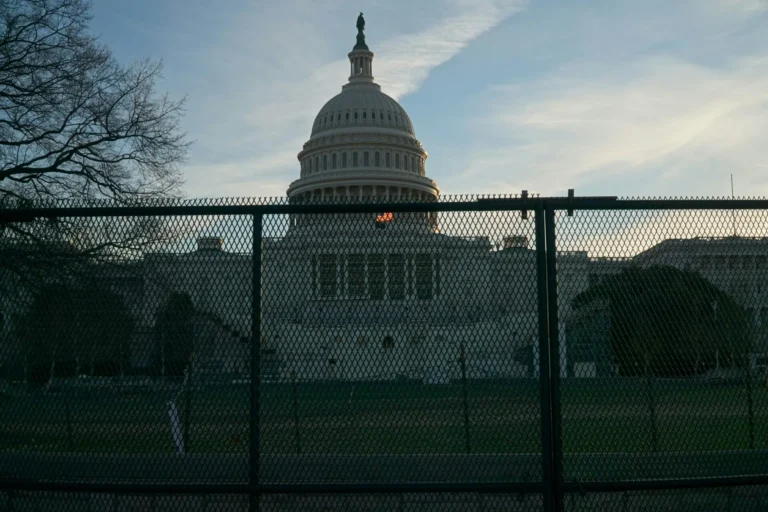By Cliff Montgomery – June 28th, 2025
The saddest thing about yesterday’s Supreme Court decision to greatly limit the judicial branch’s oversight of Donald Trump via injunction – an action taken by federal judges that puts a halt to a potentially illegal government activity, until judges rule that the activity is legal – is that it was not really a surprise.
Importantly, an injunction is not meant to protect only the plaintiff in a specific case, but also anyone else in the nation who may be suffering under the same potentially illegal treatment.
The U.S. Supreme Court has been busy over the last year, handing Trump a number of decisions that has dangerously expanded the power of former and current presidents.
“On July 1, 2024, the Supreme Court ruled 6-3 that Trump, or any other president,” explained Newsweek in a Feb. article, “has absolute immunity for core presidential actions and presumptive immunity for non-core presidential acts.”
But, as the Spark pointed out in March of this year, “according to Article I of the U.S. Constitution, the president is ‘liable and subject to indictment, trial, judgment and punishment, according to law’ if he is found to have committed illegal, impeachable offenses while performing his duties as president. There is no mention of any exception to this rule.”
In fact, after his return to the presidency in January, the Supreme Court has sided with Trump on numerous occasions as it has reviewed his cases in its emergency docket.
“A decision earlier in the week allowing Trump to deport certain migrants to countries other than their homeland,” stated CNN, “marked the 10th time the court has granted a request from Trump on the emergency docket.”
“The court has [also] allowed Trump to fire board members at independent agencies, remove transgender Americans from military service,” as well as “end other protections for migrants, even those in the country legally.”
But the decision delivered Friday may be the most far-reaching since the infamous gift from last year, which appeared to give Trump a blanket immunity for actions defined as ‘official presidential actions’.
The balance of power between the three branches of the U.S. government is an essential part of democratic governance – you really cannot have a functioning democracy without it.
Congress has its role to play in any discussion on balance of power – but our recent GOP majority does not seem very interested in holding this Republican president accountable for any potentially unconstitutional actions.
So in recent months, the federal judiciary became the only branch of government willing to hold Trump accountable. It employed an injunction every time he issued an executive order that appeared to be unconstitutional – or was undeniably against the law.
Apparently, that was too much oversight for the rubber stamp now laughingly pretending to be the Supreme Court.
After the decision, a person might still file a claim that their individual rights has been violated. If the individual wins the case, only they would be free of the law found to be unconstitutional. For everyone else, their rights remain duly violated.
If one has both the time and money to obtain good legal representation, one might have a chance. For others, they realistically have no rights unless someone has enough time and money to eventually put a case like theirs before the Supreme Court.
One can also join a class-action lawsuit. But, such suits simply cannot be used in a number of cases.
“A class can only be certified if it satisfies the requirements of Federal Rule of Civil Procedure 23,” stated Professor Amanda Frost to Judicature magazine, published by Bolch Judicial Institute
and Duke Law School. Frost is from the American University Washington College of Law, where she teaches and studies constitutional and immigration law.
She added that the class action process can also be “time consuming and difficult.”
“Certification is now even more difficult after Supreme Court decisions such as Rodriguez v. Jennings and Walmart v. Dukes,” added Frost. Therefore, she pointed out that, “in some cases a nationwide injunction may be the only means of protecting constitutional rights,” as well as efficiently “keeping the federal government within the bounds of the law.”
The injunction has been around since at least the early 20th Century – in fact, some legal scholars insist that the Supreme Court itself created the legal action, first employing it in 1913 for Lewis Publishing Co. v. Morgan. It only recently came into steady use to hold presidents of the current era – Obama and Trump, specifically – accountable for engaging in legally murky or questionable activities. Congress was either too busy, or too partisan, to question these presidents, and so the federal judiciary stepped in to ensure a balance of power would be maintained, employing a tried-and-true legal power that the Supreme Court has used to protect non-plaintiffs for well over 100 years.
So what are the two main legal arguments most often put forward for the necessity of the national injunction?
“One is that it is needed to protect certain rights,” professor Samuel Bray told Judicature magazine – he teaches and studies constitutional law, remedies, and civil procedure at the University of Notre Dame Law School. He explained “that without a national injunction, there could be widespread violation of a constitutional right,” and “yet the right will be vindicated by the courts only in a relatively few particular cases.”
The other argument “is that the national injunction allows the judicial system to more quickly get to the right answer — in other words, speed and efficiency,” added Bray.
And now, thanks to the rubber stamp called the Supreme Court, much of the power that protected constitutional rights in a swift and efficient manner is gone.






